The invention of the battery is one of the most important achievements of mankind. The first chemical current source was created by the Italian Alesandro Volta at the beginning of the 19th century, and since then his discovery has not only undergone significant improvements, but has also found application in various spheres of life - not having passed, including transport. Today, the editorial staff of the site "bestx.htgetrid.com/en/" offers you an overview of the best batteries for electric vehicles for 2020.
Content
Electric transport - what is it?
Transport is driven by energy, which comes from the following sources:
- on-board storage - designed for electric vehicles and electric buses;
- an on-board current source supplemented with a fuel power plant - used in hybrid vehicles;
- energy generated by a gasoline or diesel engine - found in diesel locomotives and dump trucks;
- energy derived from fuel cells;
- atomic energy generated directly on board - a principle applied in nuclear submarines, aircraft carriers, etc .;
- drives powered by flywheels, wind, sun - such exotic options are found in gyrobuses, solar-powered electric vehicles and others in innovative technologies;
- connection to ground power plants through substations - this is how trams, trolleybuses, monorails, electric trains, electric locomotives, etc. work.
Electric transport operates on electricity, and uses a traction motor as a drive - this is the main feature that distinguishes it from a number of other modes of movement on external or internal combustion engines. The advantages of electric transport include high performance, as well as environmental safety.
Where is it used?
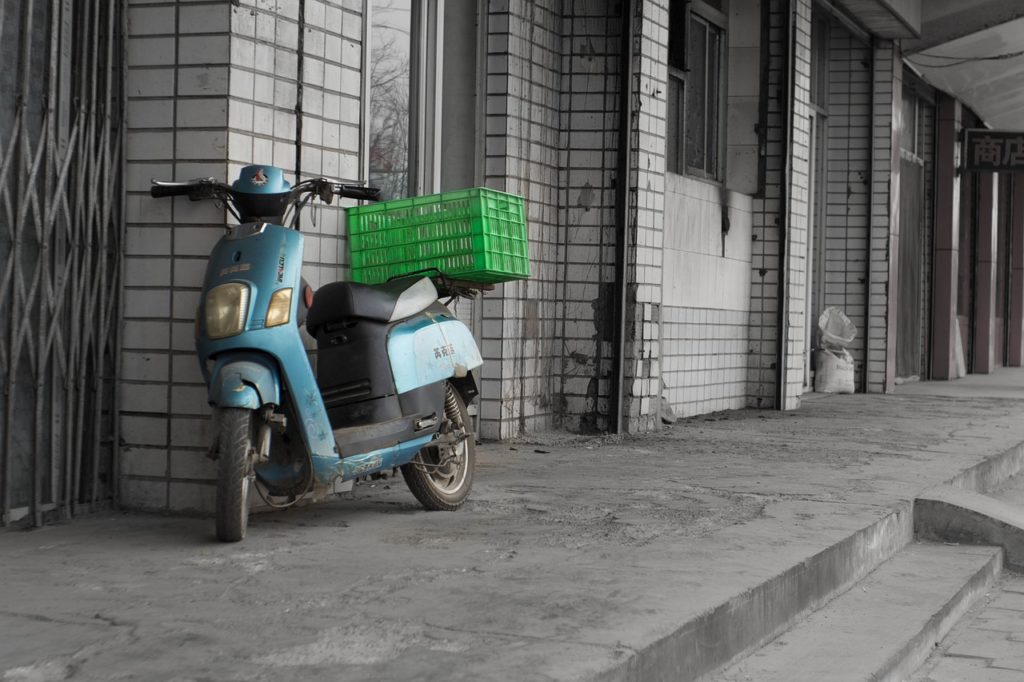
Electric transport has become widespread throughout the world.
It includes:
- Public transport is the main way of moving around the city in developed countries - it accounts for up to 50% of all transport links. Electric passenger transport is represented by trams, trolleybuses, metro stations, electric trains, monorails and funiculars.
- Passenger - used by individuals and purchased at the own request of the owner. Electric passenger transport includes electric vehicles, electric scooters, electric bicycles, electric motorcycles.
- Freight - the category of freight includes transport, whose efficiency allows for special transportation. For example, freight trolleybuses used in quarries.And on the railways there are electric trains and electric locomotives of direct and alternating current. Also worth mentioning are electric vehicles, carts and forklifts used for material handling in large factories.
It should be noted that almost any transport can be upgraded by replacing its non-electric engine with an electric one for use as a draft force.
At the moment, at the development stage, there are airplanes on electricity, electric submarines, electric ships.
Electric battery - features of work
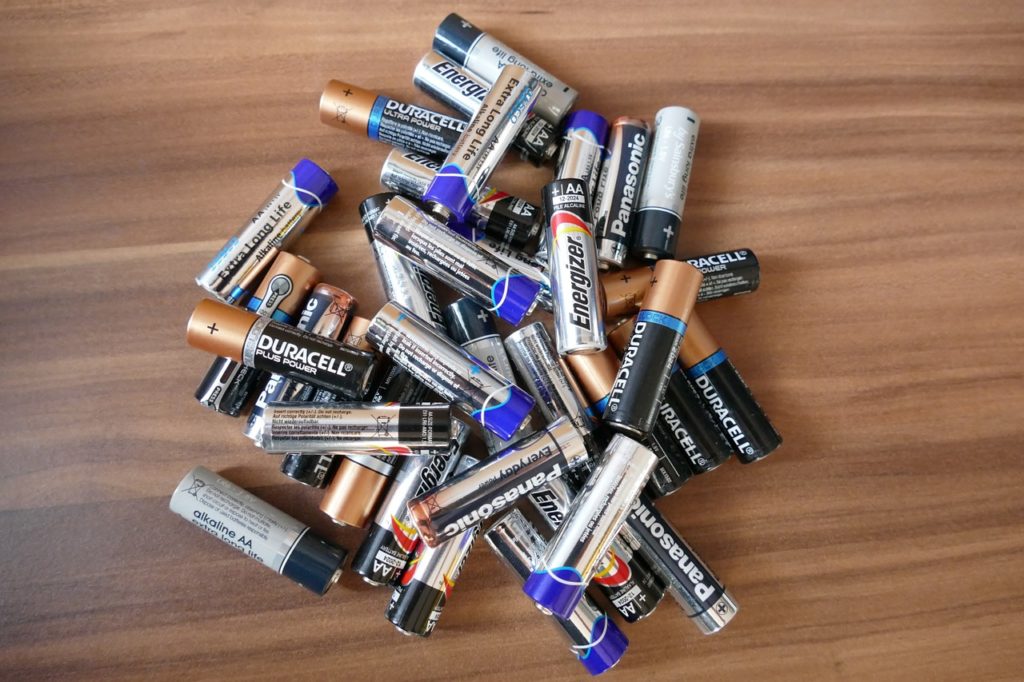
An electric accumulator (accumulator) is a chemical source of current of repeated cyclic use by means of charging and discharging. Energy storage, autonomous use on various electrical devices, provision of backup energy sources - these are the main features of electric batteries. The principle of operation of such a power source is based on the reversibility of a chemical reaction.
What are they?
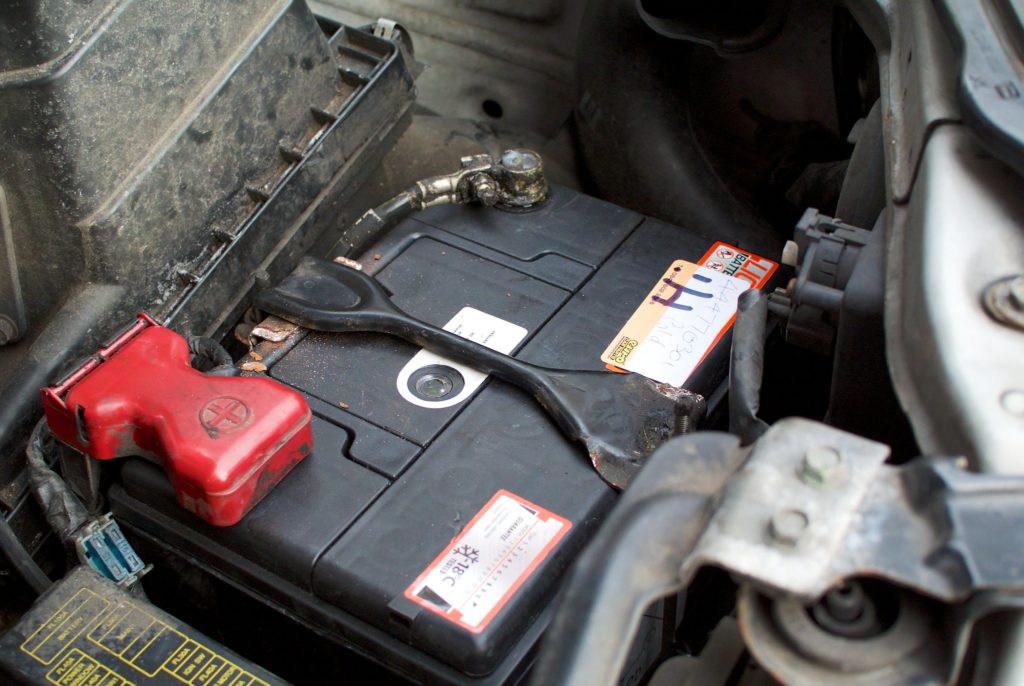
There are the following types of batteries:
- Antimony;
- Low antimony;
- Calcium;
- Hybrid;
- Gel and AGM drives;
- Alkaline;
- Lithium-ion.
Antimony batteries
Antimony current source is now considered obsolete. Equipped with lead plates, which contain about 5% antimony. It is necessary to increase the strength of the plates, since lead has a very soft structure and in its pure form is not intended for use in batteries. Antimony batteries are also often referred to as "serviced" batteries.
Low antimony storage
Low antimony models are characterized by a low antimony content. They began to be used to reduce the intensity of evaporation. Such batteries have less than 5% antimony in their composition and are good in that they do not need frequent topping up with distilled water, like antimony. The advantages also include the low self-discharge of the battery during storage. They are considered poorly maintained, since it is still necessary to control the water level.
Calcium batteries
Calcium replaced antimony and helped to reduce the evaporation of water from the reservoir. Calcium models are often labeled "Ca / Ca". Such an inscription indicates that the substance is located in the lattices of negative and positive electrodes. Some manufacturers add small amounts of silver to the composition, which reduces the internal resistance of the device, increases efficiency and increases capacity. At the moment, calcium models are being produced, which do not give off water vapor for the entire operating period.
Hybrid batteries
On the case of hybrid drives there is a mark "Ca +" "Ca / Sb". Electrode arrays of such storage devices are manufactured in accordance with various technologies. Positive - with the addition of antimony, negative - with the addition of calcium. Hybrid power supplies were originally designed to combine the benefits of calcium and antimony batteries. However, in reality, the indicators turned out to be average.
Water consumption in hybrid devices is less than in low antimony devices, but more than in calcium ones. But hybrid ones are more resistant to discharge and voltage surges in the electrical subsystem of the machine.
Gel and AGM batteries
This category includes devices manufactured using AGM and GEL technology, characterized by the presence of an electrolyte in a bound form. Such drives are the result of an attempt to make the operation of batteries as safe as possible and to exclude the possibility of electrolyte leakage if the case is damaged or the battery is turned over.
The differences between AGM and GEL technologies lie in the way the electrolyte binds. In AGM drives, it impregnates porous fiberglass between the plates. GEL technology involves converting electrolyte into a gel state by combining it with silicon.
Both types of batteries are attractive in that they are capable of delivering a high inrush current regardless of charge.And so on until they are completely empty, after which their capacity is fully restored.
For passenger cars, gels are used less often than other types due to their high cost. Most often they are installed in uninterruptible power supplies, motorcycles and water transport.
Alkaline drives
In alkaline models, the role of the electrolyte is played by alkali, and not by acid, as in previous versions. There are many types of alkaline batteries. However, only two are most widely used.
Batteries marked “Ni Cd” are characterized by the presence of nickel hydroxide on the positive electrodes and a mixture of iron and cadmium on the negative electrodes.
Similarly, the positive electrical conductors in nickel-iron devices are coated with nickel hydroxide, while the negative electrodes are made of iron. Potassium hydroxide is used as an electrolyte, and the plates are made of perforated metal and packed in envelopes. Due to the fact that the active mass is in these "envelopes", the batteries have an increased resistance to vibration.
It should be noted that in alkaline storage devices the number of positive and negative electrodes differs - in nickel-cadmium positive plates there is one more. In nickel-iron - one more negative.
Li-ion
Batteries designated as Li-ion are the most promising sources of electric current at the moment, which explains the popularity of these models. Lithium ions are current carriers in such devices. For the manufacture of negative electrodes, graphite is used, which has been replaced by metallic lithium. For positive electrodes, lithium-ferro-phosphate alloys are used, which are characterized by low cost and low toxicity, as well as ease of processing.
Basically, mobile electronics and modern electric vehicles are equipped with Li-ion batteries.
Advantages and disadvantages
Pros and cons of lead acid batteries
Pros:
- For a short time, they are capable of delivering high currents (up to 10 C);
- Have a low cost;
- Maintenance free;
- Can be operated at low temperatures, including charging.
Minuses:
- Discharge below the minimum mark is not allowed;
- Low energy consumption considering the total weight;
- Despite the fact that operation in cold weather is possible, batteries sometimes freeze, which leads to a loss of capacity and voltage;
- Not designed for fast charging, during which they are also toxic;
- Short operational life - about 1 - 1.5 years on average.
Pros and cons of gel devices
Pros:
- Sealed body;
- Able to function both vertically and horizontally;
- Withstand temperature extremes;
- Low internal resistance, due to which there is a high current output;
- Vibration resistance;
- Are not damaged when fully discharged;
- The service life is longer than that of lead acid batteries.
Minuses:
- Low energy consumption with high weight;
- A noticeable drop in voltage as the battery is discharged;
- It is categorically impossible to quickly charge;
- When overcharged, they can fail.
Pros and cons of alkaline batteries
Pros:
- They do not fail when over-discharged, and therefore long-term storage does not lead to the loss of their properties;
- Work stably at low temperatures;
- Self-discharge in alkaline is lower than in acid;
- Do not emit harmful fumes;
- They tend to accumulate a large capacity per unit mass, as a result of which they are able to deliver current for a longer time.
Minuses:
- The voltage is lower than that of lead-acid, due to which the achievement of the required indicators increases the dimensions;
- The price is higher than that of acid ones.
Pros and cons of nickel-metal hybrid batteries
Pros:
- Long service life if used correctly;
- Significant discharge current;
- Operation in frost is allowed;
- Capacity is not lost even in harsh weather conditions;
- Self-discharge is low enough;
- There is practically no "memory effect".
Minuses:
- Low energy density compared to other species;
- Considerable weight.
Pros and cons of lithium-ion batteries
Pros:
- High energy capacity per unit of mass;
- Low self-discharge;
- They have no "memory effect".
Minuses:
- There is a discharge limit below which one cannot go down;
- Sensitive to low temperatures;
- They lose their capacity during long-term storage.
In order to understand which battery is better to buy, you must first determine the main selection criteria.
How to choose a battery?
The batteries used for transport are traction and starter.
Starter motors are needed to start engines installed in cars and trucks, as well as in special equipment.
Traction motors are designed to power the electric motors of vehicles.
To choose the appropriate model, you need to pay attention to the following parameters:
- Type of electric transport;
- Basic technical characteristics;
- Manufacturer;
- Cost.
Type of electric transport
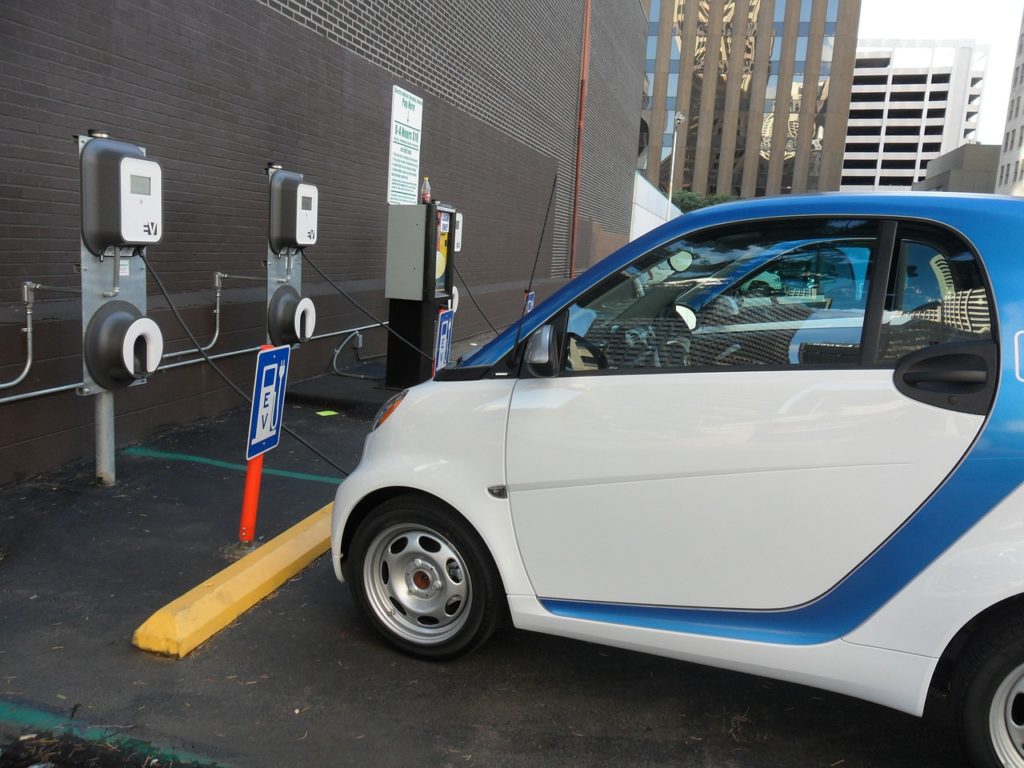
Each drive has its own advantages and disadvantages. Hence the question naturally arises - how to choose the right one?
First of all, it is necessary to proceed from what kind of transport the battery is being selected for.
Budget e-bikes tend to come with lead acid or gel options, which presents a challenge. After all, such a transport is not easy and often you have to lift it with your hands. The same can be said about electric scooters - taking into account the battery, their weight exceeds the weight of a device that could be carried by hand. But for golf carts, forklifts, electric scooters and other equipment that does not involve manual movement of vehicles, such batteries are great.
Nickel-cadmium models are quite interesting, but they are not suitable for scooters and electric bicycles, since they are of considerable size. But for an electric car, for a boat and other river transport, Ni-Cd will be a good option.
Another subspecies of alkaline devices - iron-nickel - is suitable for electric motor vehicles as traction.
Nickel-metal-hybrid and Li-ion models should be chosen for electric vehicles, scooters, bicycles, etc.
Main technical characteristics
| room | Specifications | Recommendations |
|---|---|---|
| 1 | Capacity | The most reliable way to calculate the energy capacity of a battery is based on Wh - a watt per hour, which means the power that a battery can deliver in watts per hour. In order to find out this indicator, it is necessary to multiply the voltage by the capacity, calculated in Ah. |
| 2 | Standard size | There are two series of batteries depending on the width - E and L. E - narrow, L - wide. |
| 3 | Rated voltage | Battery voltage refers to the potential difference that is immersed in the electrolyte and acts as positive and negative electrodes. The voltage is not a constant value and changes depending on the charge level of the battery. Nominal voltage, on the other hand, is a constant value that characterizes a particular model. |
| 4 | Optimal discharge limit | The discharge level to which it is safe to discharge the battery. |
| 5 | Critical discharge limit | The discharge level of the drive, which should not be crossed, otherwise the battery may fail. |
| 6 | Operating temperature range | The temperature range in which the battery works at its best. |
| 7 | Cyclic resource | Cycle Life refers to the number of times a drive can be charged and discharged before it loses its performance. In accordance with the current GOST, if the device loses 50% of the original capacity, it must be replaced. |
| 8 | Lifetime | The service life depends on the conditions of use and technical characteristics. This figure can range from 5 to 20 years. |
| 9 | % self-discharge | Self-discharge in percentage that occurs during long-term storage of the device. |
| 10 | Minimum charging time | Time period for which it is permissible to fully charge the battery. The minimum charging time varies from 6 to 15 hours depending on the model. |
| 11 | Maintenance | Maintenance refers to the need for regular topping up of water. The best option for traction batteries is not serviced. |
Manufacturer and labeling
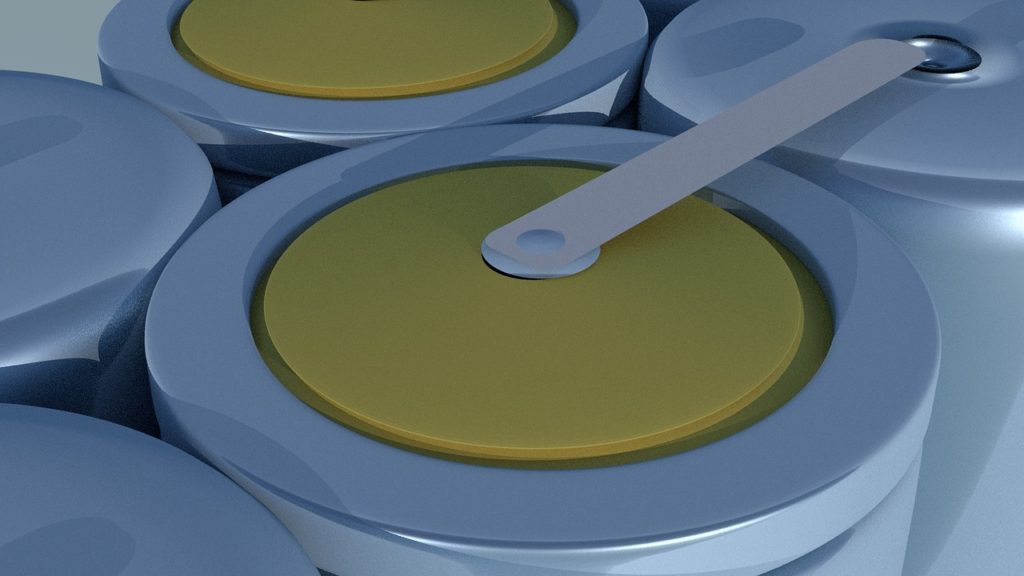
Which brand is the best battery? It is not easy to answer this question, but the leaders of this segment have long been identified on the market.
The best companies for the production of batteries for electric vehicles and electric bicycles are:
- LG Chem;
- Panasonic;
- Samsung SDI;
- BYD;
- CATL;
- AESC.
Popular models for general use are produced by the brands ROBITON, CSB, Energia, RDrive, Chilwee, Ventura, AKTEX (Irkutsk Battery Plant).
In order to avoid mistakes when choosing, you should pay attention to the marking of the battery. The main document that is valid in the battery industry for a given period of time is DIN.
DIN is a German industrial standard widespread in Europe and gradually being replaced by the ETN standard. With the DIN standard, the numerical markings are read as follows.
The first digit is the nominal voltage (1-2 - 6V, 5-7 - 12V). The second and third digits are the nominal capacity. The fourth, fifth and sixth digits are a unique code that contains information from the manufacturer. The seventh, eighth and ninth digital designations are the CCA cold cranking current.
CCA is measured in amperes and is a measure of the starting performance of the battery. The higher the cold cranking current, the better. There are various methods for measuring CCA - SAE, DIN, IEC, EN, JIS. When comparing the CCA of different drives, you should make sure that the parameters for both models are specified in accordance with the same methodology.
How much a battery costs depends on the type of device, power and purpose. Generally speaking, lead-acid batteries are inexpensive in terms of price, and cheaper than casting-acid and gel batteries. In this case, traction batteries, as a rule, are more expensive than starter and backup batteries.
Rating of quality models for 2020
ROBITON VRLA 6-4.5 4.5 Ah
Manufacturer: ROBITON.
Voltage (nominal): 6 Volts.
Dimensions (d / h / w): 70x101x47 mm.
Weight - 700 g.
Average price - 395 rubles.
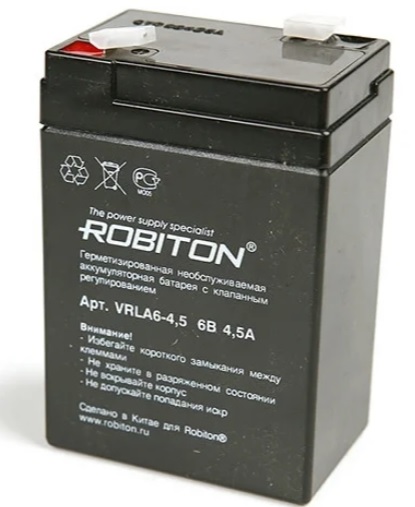
Robiton lead-acid battery, valve regulated and protected from electrolyte leakage. The device is completely ready for use and is suitable for electric vehicles such as scooters and motorcycles. Nominal working t0 equals 20 0C, but the battery can function effectively even at +500C. Extremely low temperature -200C. Self-discharge is 2-3% per month when stored in room conditions. The maximum service life is 5 years.
Advantages:
- sealed;
- does not need maintenance;
- with a wide range of operating temperatures;
- small self-discharge;
- safety;
- can be used for UPS;
- suitable for indoor installation.
Disadvantages:
- cost;
- low power consumption.
CSB GP 1272 7.2 Ah
Manufacturer: CSB.
Voltage (nominal): 12 Volts.
Dimensions (d / h / w): 150x94.3x64.8 mm.
Weight - 2.4 kg.
Average price - 1200 rubles.
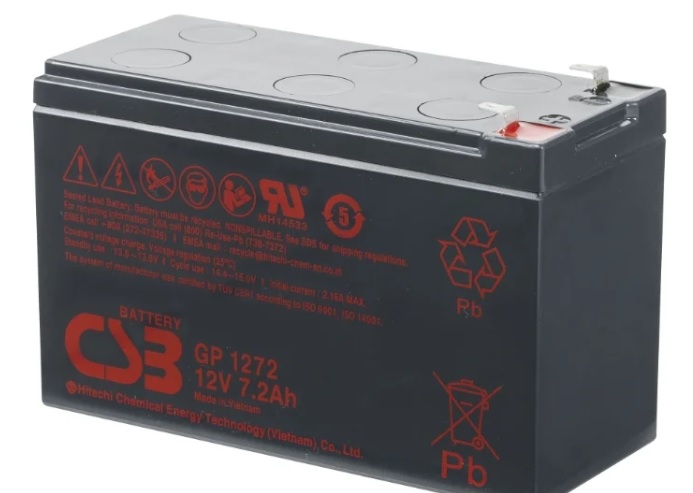
Standard general purpose sealed lead acid storage battery from Taiwan brand CBS Battery. Made in accordance with AGM technology and can be applied to UPS. Able to operate in both cyclic and buffer mode. Operating temperature range - from -150From to +400C. During use, water topping is not required, the service life is 5 years with a careful approach. The device can be stored for more than six months without recharging at 260FROM.
Advantages:
- good energy intensity;
- rechargeable;
- highly efficient;
- does not need maintenance;
- has small dimensions;
- operational safety;
- discharge resistance;
- high reliability.
Disadvantages:
- weight.
Ventura GP 12-9 9 Ah
Manufacturer: Ventura.
Voltage (nominal): 12 Volts.
Dimensions (h / w / d): 100x65x151 mm.
Weight - 2.5 kg.
Average price - 1300 rubles.
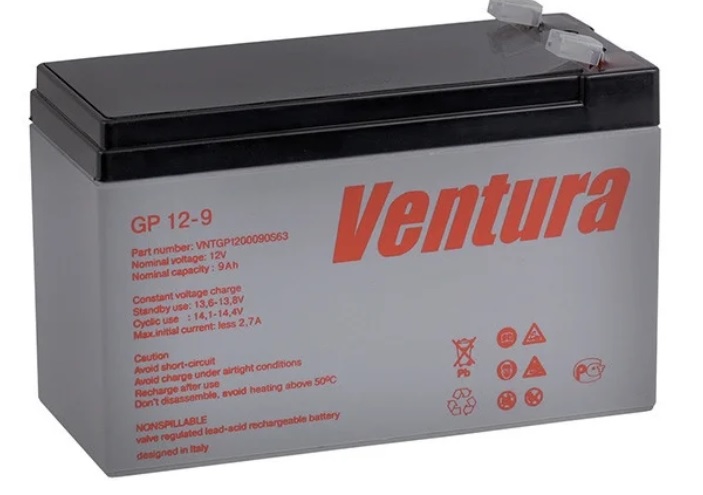
Lead-acid storage for an electric vehicle with a capacity of 9 Ah, manufactured using AGM technology - a glass fiber separator is impregnated with liquid electrolyte. Due to the presence of an overpressure valve inside the device, stable pressure indicators are maintained, ensuring the correct passage of chemical reactions, in particular, gas recombination.Low gas evolution, low internal resistance, excellent performance during high current discharge, no restrictions during transportation - this is what characterizes this model. The service life of the device is 5 years at 250 full charge cycles.
Advantages:
- wide range of applications;
- no need to add water;
- horizontal and vertical installation;
- sealed body;
- quality materials;
- with safety valves;
- with low self-discharge.
Disadvantages:
- small cyclicality.
Energy Е0201-0019 7 Ah
Manufacturer: Energy.
Voltage (nominal): 12 Volts.
Dimensions (d / h / w): 151x94x65 mm.
Weight - 2.1 kg.
Average price - 1300 rubles.
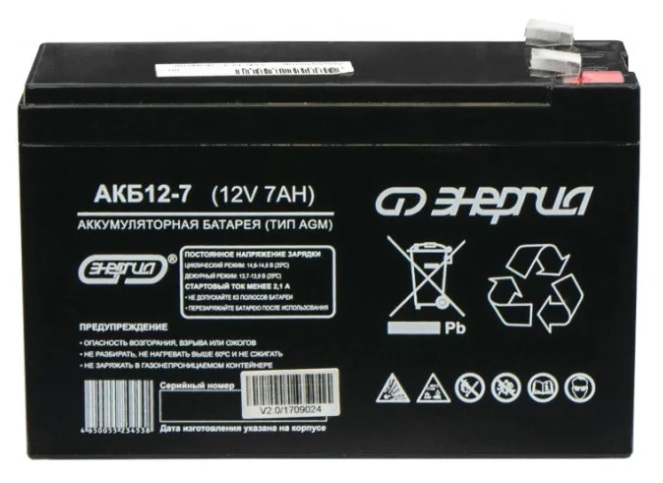
A Russian non-maintenance drive that can withstand heavy loads even in the most difficult operating conditions. The main feature of the device is the absorbed, not liquid, electrolyte. Made of high purity materials and equipped with sturdy grates and plates. Can be installed in any position and is suitable for UPS. Operating temperature range - from -150From to +500C. The maximum service life with proper use is 5 years, in the buffer mode - 15 years.
Advantages:
- stable work;
- vibration resistance;
- valve adjustment;
- there is no need to add water;
- sufficient capacity;
- suitable for indoor installation;
- low self-discharge.
Disadvantages:
- cost.
RuTrike 6-DZM-12
Manufacturer: RuTrike.
Voltage (nominal): 12 Volts.
Dimensions (l / w / h): 151x100x99 mm.
Weight - 4.2 kg.
Average price - 2 750 rubles.
The traction battery of a gel type with a gas recombination system is specially designed for electric transport - bicycles, motorcycles, scooters, scooters, wheelchairs and other devices based on an electric drive. The capacity is 16 Ah. It has a cycle life of up to 700 cycles at an allowable discharge depth of 80 percent. This significantly increases the travel time without recharging. Can be stored without recharging for 15 months at a temperature not exceeding 250C and installed in any position. There are no restrictions on transportation. The service life in the buffer mode is 5 years.
Advantages:
- sealed;
- unattended;
- resistant to deep discharges;
- shockproof;
- fireproof ABS case;
- resistant to vibration.
Disadvantages:
- low energy consumption per unit of mass.
Chilwee 6-DZM-20
Manufacturer: Chilwee.
Voltage (nominal): 12 Volts.
Dimensions (h / w / d): 170x77x181 mm.
Weight - 7 kg.
Average price - 4,700 rubles.
Traction gel battery with reverse polarity and 28 Ah energy capacity from a Chinese manufacturer. Manufactured in accordance with GEL technology. In the buffer mode, the device can last up to 5 years. Cyclic service life (charge / discharge) - more than 700 cycles.
Advantages:
- not serviced;
- sealed;
- with VRLA system;
- high discharge capacity;
- high quality alloy grilles;
- does not contain cadmium;
- low gas emission;
- environmentally friendly.
Disadvantages:
- weight.
RDrive 6 DZM 20 electro
Manufacturer: RDrive.
Voltage (nominal): 12 Volts.
Dimensions (h / w / d): 170x77x181 mm.
Weight - 7 kg.
Average price - 5,500 rubles.
Lead-acid deep discharge current source with an energy capacity of 28 Ah. Designed for cyclic operation. Produced in accordance with Silica GEL technology, which is characterized by the presence of a thickened gel electrolyte and a gas recombination system. The polarity is reversed. Perfect for electric vehicles such as bicycles, motorcycles, scooters, tricycles and other electrically powered devices. Withstands up to 400 discharge cycles.
Advantages:
- good energy consumption;
- does not need maintenance;
- tolerates the discharge to "zero" well;
- high quality grilles.
Disadvantages:
- significant weight;
- loses in cyclicity.
Trojan U1-AGM
Manufacturer: Trojan.
Voltage (nominal): 12 Volts.
Dimensions (l / w / h): 207x132x174 mm.
Weight - 12 kg.
The average price is 13,000 rubles.
Maintenance-free traction battery type AGM manufactured in the USA with fiberglass separators impregnated with sulfuric acid. The battery capacity is 29 Ah. Equipped with reinforced plates for long service life. The polypropylene housing protects against mechanical and thermal damage, and therefore the device can be used in harsh conditions.
Advantages:
- high performance;
- shockproof;
- vibration resistance;
- increased operational life;
- with removable carrying handles;
- with safety valve.
Disadvantages:
- significant weight.
Li-Ion Shark / Shark Black 48V 16Ah
Manufacturer: LG.
Voltage (nominal): 48 Volts.
The average price is 28,000 rubles.
Li-Ion battery with an energy capacity of 16 Ah, which got its name from the special shape of the case. Designed for bicycles. One charge is enough to cover a distance of 25-50 km - depending on road conditions, driving characteristics and vehicle weight. This battery can be used in conjunction with motor wheels up to 2000 watts inclusive. Additionally, the device is equipped with a special lock to prevent it from being stolen from the bike and a triangular plug, under which there are a switch, a USB socket and a charging connector. The service life depends on the operating devices and on average ranges from 3 to 5 years. The number of full charge cycles is 1000, which is an excellent result. Upon reaching this indicator, the battery capacity is reduced to 85%. For long-term storage, you must charge the drive every two months.
Advantages:
- functionality;
- easy installation;
- convenient placement;
- quick release;
- supports currents up to 40A;
- with charge indicator;
- high cyclicity;
- moisture protection.
Disadvantages:
- unstable work at subzero temperatures;
- flimsy fasteners.
Li-ion 18650 48V 26Ah 25A
Manufacturer: China.
Voltage (nominal): 48 Volts.
Dimensions: 433x115x77 mm.
Weight - 6.4 kg.
The average price is 30,000 rubles.
A lithium-ion battery designed for equipping electric scooters and electric bicycles, which is attractive both in terms of power and energy consumption of 26 Ah. Allows you to travel huge distances on a single charge. The cycle life is between 500 and 800 cycles, which is a very high value.
Advantages:
- high power and capacity;
- high-quality cells;
- great cyclicality;
- long service life;
- efficiency.
Disadvantages:
- weight;
- high price.
If you have experience using batteries described in the rating, or a more interesting model, tell us about it in the comments.












